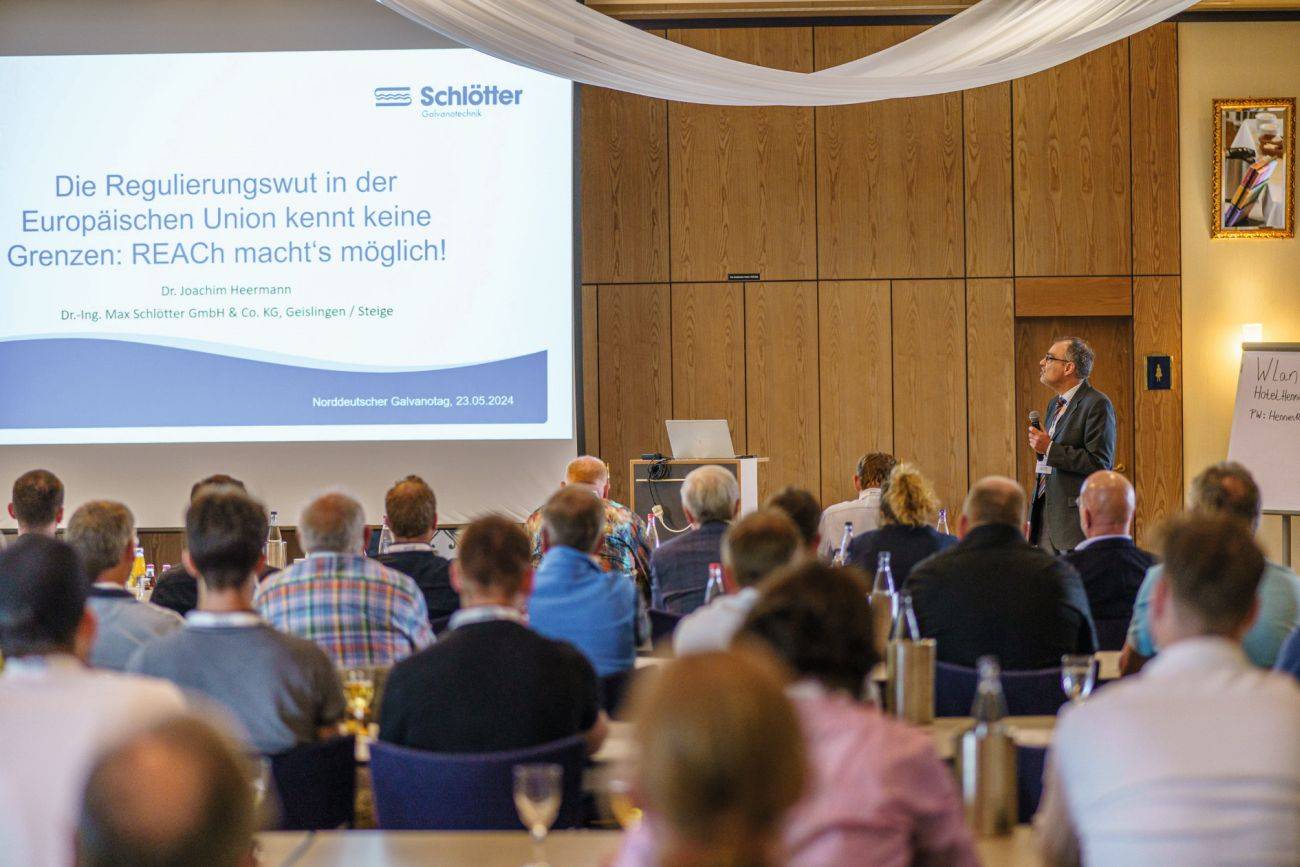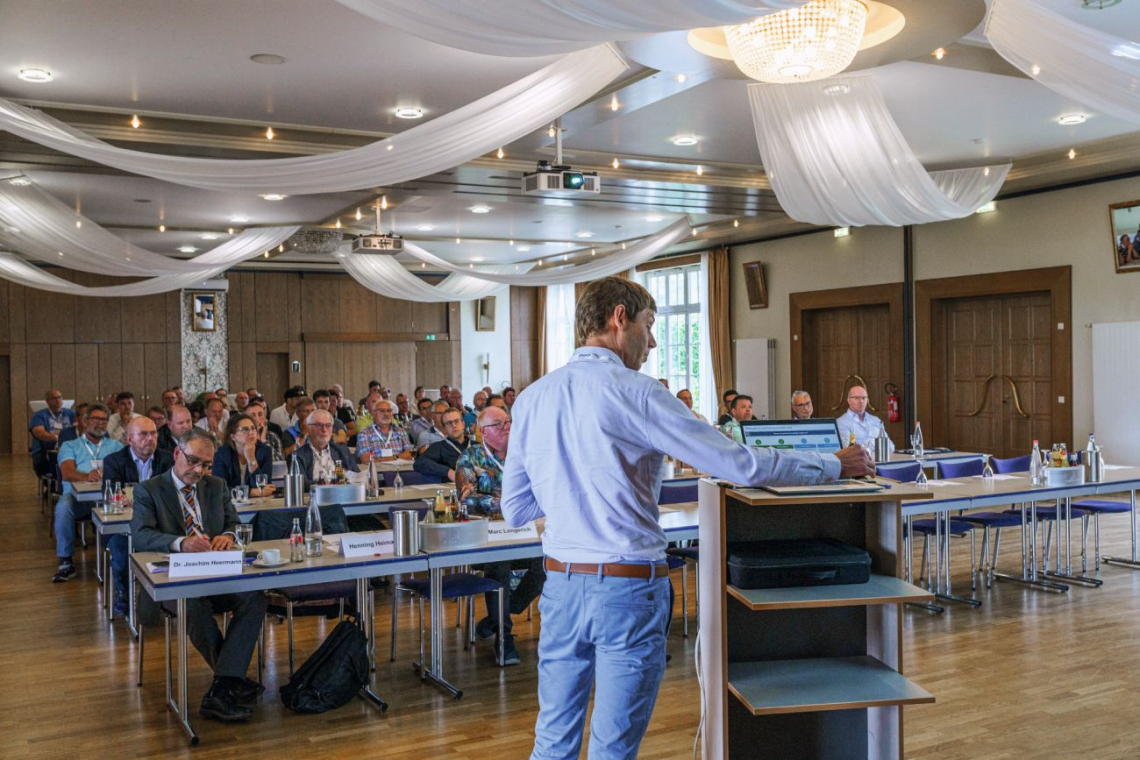Efficient rectifiers that conserve resources
Heinrich-W. Kämper from Munk GmbH in Hamm kicked off the event with the topic "Rectifiers and their technology: Considerations for resource conservation and efficiency". After a brief introduction to Munk GmbH, the speaker went into the various rectifier technologies and their cooling that are currently available on the market. The calculations were interesting, showing how the use of reinforced copper busbars can reduce operating voltages and thus save operating costs. Further examples of the use of waste heat by means of cooling water or exhaust air rounded off the presentation.
Reducing emissions in the electroless nickel process
The second presentation was given by Henning Heimann from MKS Atotech Deutschland GmbH & Co KG in Berlin. His topic was: "Medium-phosphorus electroless nickel process with reduced bath temperature - reduction ofCO2 emissions". Using extensive calculation examples, the speaker explained how much energy is required to heat up and maintain the necessary operating temperatures of electrolytes for electroless nickel plating. This poses a challenge for lowering the necessary operating temperature. The answer is a process that operates at a reduced temperature of 75 °C instead of the conventional 90 °C. The working parameters and coating properties of this process were examined in detail and the potentialCO2 savings were extrapolated.
Reducing emissions through bath optimization
Marc Longerich from SurTec Deutschland GmbH in Zwingenberg concluded the first part with his presentation "Energy savings through bath optimization". Rising energy costs make it necessary to check processes for cost efficiency. Using the example of alkaline galvanizing with pre- and post-treatment, it was shown that there is considerable potential for savings here. Decoction degreasing saves a lot of energy as a low-temperature process, but electro-degreasing can also be interesting on a potassium basis due to increased conductivity, which is only slightly reduced by a high carbonate concentration. The same applies to galvanizing electrolytes. Finally, the speaker discussed the special features of zinc nickel electrolytes. The break again provided an opportunity for networking and an exchange of experiences over coffee, bread and cake.
Regulatory mania for chromium(VI) and PFAS
After the break, the second lecture block followed with Dr. Joachim Heerman from Dr.-Ing. Max Schlötter GmbH & Co. KG from Geislingen an der Steige with "The regulatory frenzy of the European Union knows no bounds: REACh makes it possible". The speaker began by talking about the large number of laws that a company in the EU today has to comply with. There are so many that they can only be touched on very superficially. Furthermore, the objectives of REACh are now defined as "moving targets". In particular, the speaker addressed the previous and current situation of chromium(VI) under REACh. A lot is changing here. However, it is still very uncertain where this will lead. Another topic is the currently planned restriction of PFAS. Future technologies such as e-mobility and the hydrogen economy are dependent on these substances, although the demand for PFAS in the metal industry is extremely low.
 In his speech, Dr. Joachim Heermann from Schlötter took aim at the regulatory frenzy in Brussels
In his speech, Dr. Joachim Heermann from Schlötter took aim at the regulatory frenzy in Brussels
Quality problems in production
The planned presentation by Dr. Jens-Uwe Riedel had to be postponed to the next North German Electroplating Day for family reasons. Thomas Kruggel kindly stepped in with his presentation "Well electroplated parts: The story often begins BEFORE electroplating". In his very practical presentation, he described quality problems in electroplating production and beforehand at the supplier. Material defects and transport damage are often blamed on the electroplating process and can cause high costs and a lot of trouble. Various examples from decorative chrome plating are used to describe faults and how to rectify them. It is worth taking a close look before electroplating. Faults can be identified and rectified before avoidable costs are incurred. It is certainly not a mistake for companies to inform and support each other at association level in order to recognize and avoid supplier errors.
Conference chair Thomas Kruggel concluded the conference by thanking the four speakers, who once again presented interesting topics in a skillful and entertaining manner. He also expressed his delight at the lively attendance, which shows that the North German Electroplating Day continues to be a popular event among the specialist conferences on offer. The next North German Electroplating Day is planned for 22.05.2025.





